Partner Spotlight: HopCat
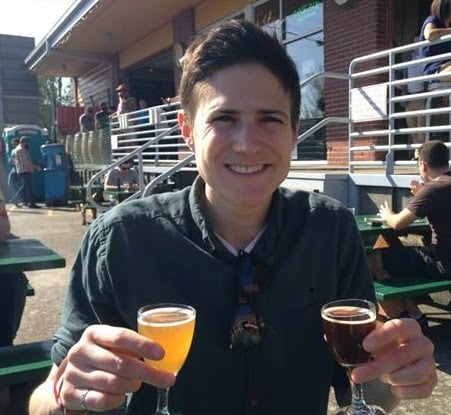
November 4, 2021
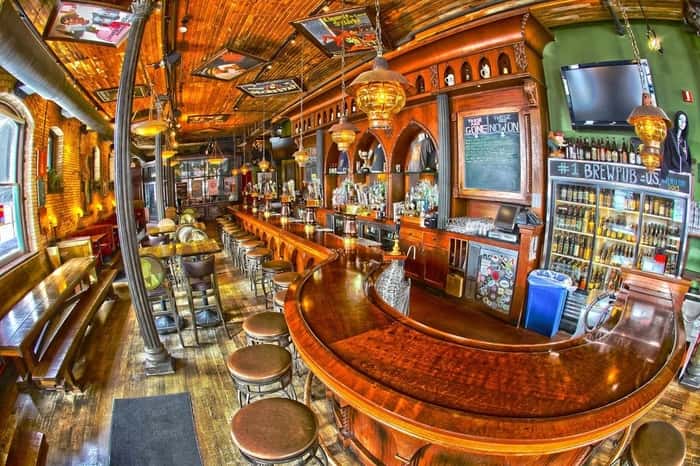
With nine locations across Michigan, Indiana, and Nebraska, HopCat operates on one specific mission: Be a great place to find great local craft beer.
Operating nine establishments, each with their own unique identity, design, and taplists, poses its own unique set of challenges. Mainly, each location constantly rotates new beers across forty different taps that need to be maintained across a variety of print menus. Furthermore, each establishment strives to connect with its local community, finding new, engaging ways to serve its specific city or neighborhood.
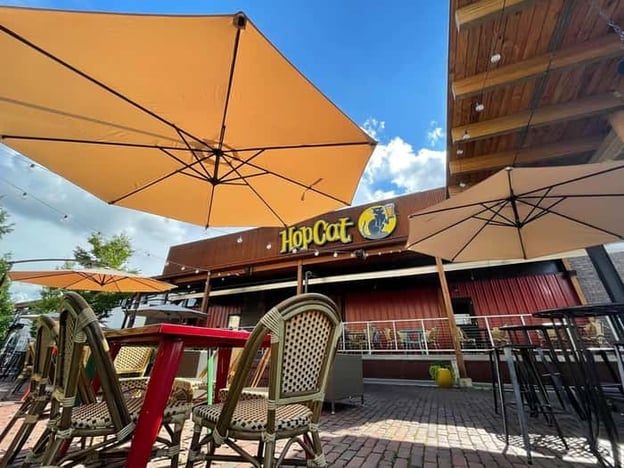
Since 2018, HopCat has been leveraging Untappd for Business’ integrated digital menus and print menus to help organize and implement each location’s individual taplists. Additionally, the craft beer bar has partnered with Untappd for Business to create local and sponsored badges to cultivate community and tap into the gamification of the Untappd app. Partnering with Untappd has provided an all-inclusive, one-stop-shop for HopCat to efficiently maintain the huge, constantly rotating draft lists at each location and to connect with each location’s respective consumers.
Overall, the Untappd for Business software has saved valuable labor hours that used to be spent updating menus and helped HopCat culturally connect with its customers.
We sat down with Justin Pollock, Beverage Manager at Project Barfly, to chat about how HopCat has evolved in a constantly changing craft beer industry, the importance of leveraging Untappd for Business’ print menus, and how Untappd’s local and sponsored badges help tap into HopCat’s unique identity.
Grace Weitz: First, for those who don’t know, can you describe HopCat in your own words?
Justin Pollock: HopCat was created with one idea in mind: We wanted to be a great place to find craft beer. We’re coming up on our original store turning fourteen. The original opened in 2008. And then we really started adding locations in 2014. There’s a pretty big age difference between the kids.
We’ve sold everything from your obscure Belgian ales to things from our biggest breweries in and around our locations. But local beer has always been the focus.
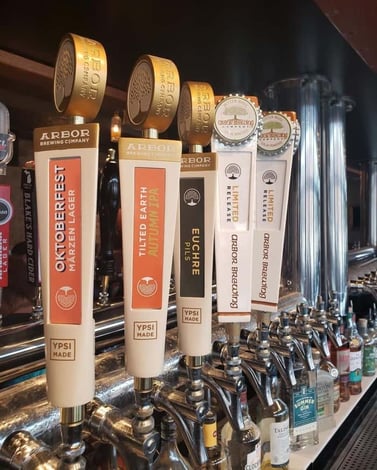
Since June 2020, we’ve only sold local beer. We have seven stores in Michigan and we have only sold beer from Michigan. We have one in Indiana and they only sell Indiana beer. We have one in Nebraska where we do a great job of highlighting the Nebraska breweries. They make up ninety to ninety-five percent of our menu. But Nebraska is still a growing industry, so we go one state in each direction to find products as well.
I’m super passionate about this. If we couldn't support our local brewing community, then are we living up to our mission of trying to share great craft beer with everybody? It’s really about trying to support our local brewing industry a little bit better. We’ve been blessed to have stores in great markets with awesome breweries and awesome people.
There’s so much to the HopCat story. It’s continuing to change just like beer. What craft beer is today is not what it was a year ago or five years ago or ten years ago. That story will keep evolving and our brand will follow that in a lot of ways.
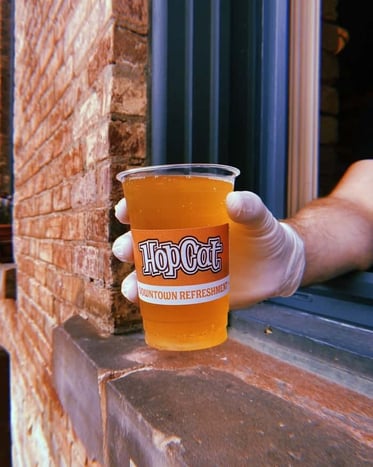
GW: Speaking of change, I’m sure that COVID had its own effect on HopCat. How have things changed at HopCat during the pandemic?
JP: When COVID hit, everyone shut down. Since June 2020 when we reopened, like many people we started out with fewer taps. And it has stayed that way. [Prior to the pandemic] most locations had 100 handles. But truthfully we’re never going to go back to that, partially because beer has changed and our philosophy and perspective has changed. Whether for better or for worse, the consumer expects a new beer every single day every single week. To keep up with the pace of change, we have to do the same thing.
With the reduced seating capacities because of COVID, switching from 100 handles to forty to fifty handles really helps us make sure that we’re constantly innovating and constantly selling what’s new and what’s best.
GW: Why did you reach out to Untappd for Business?
JP: Ultimately, from Untappd for Business we were looking for a one-stop shop that helped us integrate our menu process. Time is money, and we’d rather have our people talking about beer and working with our teams than trying to create menus.
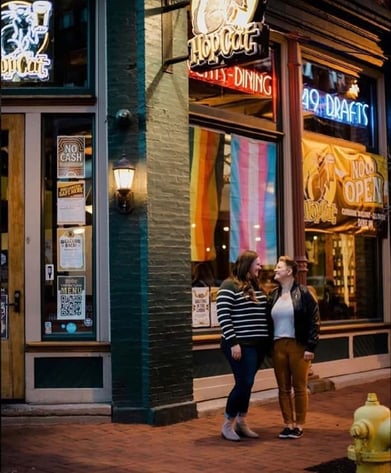
GW: Can you explain more in depth about the exact problem you were hoping to solve?
JP: Early on we used to create [print] menus for each one of our stores. Godbless Adobe, but we used Adobe InDesign files. Our menu creation process was hours long. Basically someone in each store [handled this]. They not only had to know about beer, but also had to know creative design. If somebody took a vacation, it was just pray that the beer lasts a week because this is going to get rough.
Obviously, when you live in a world of chain restaurants, there is usually someone behind the scenes to provide oversight. I can’t imagine trying to do my job today without a platform like Untappd for Business. I’d only be staring at menus and calling stores asking them to send an email with a scan of their menus over. Having to just click a button to see all the menus and to see what’s going on has been gigantic.
I would put it like this: If one person spends three hours for one store trying to create a menu and then you multiply that by all our stores, that quickly turns into forty hours a week worth of man hours just to try and keep up-to-date menus for your guests. Currently, I do all the backend loading of beers on Untappd for our stores and it takes me less than three hours to do that for all of our locations. A gigantic, enormous, however many other descriptive large words you want to use for time, that’s how much Untappd for Business saves me.
GW: So Untappd for Business has saved you many hours on updating menus. I also know that Untappd for Business has allowed you to create a comprehensive print menu too, right?
JP: Yes! One of the things I have really loved about Untappd for Business is the print menu templates. We have always employed creative designers within our company. For a company of our size, that’s fairly unique. A lot of people go outside their own four walls and pay creative designers. We’ve always strongly felt that everything that we do or print or put in front of a person needs creative design behind it. I love the fact that our menus through Untappd are our menus. Untappd for Business has been phenomenal here.
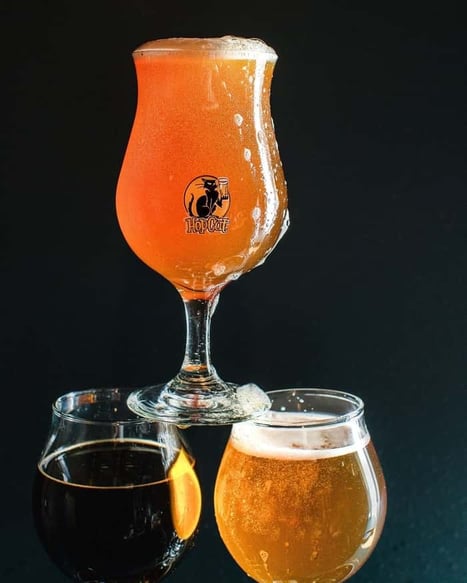
GW: What have been some of the other helpful features of the print menus?
JP: We’ve worked through auto-resizing, which was super helpful as our tap numbers ebbed and flowed.
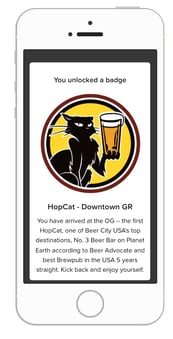
GW: Just for clarification here: Auto-resizing means that you can add any number of beers to your print menu and it will automatically resize to fit the space. There won’t be any awkward white spaces or conversely any tight-fitting text. Auto-resizing helps your menus look nicer. This feature works really well for locations such as HopCat that are getting new beer all the time, kicking kegs at a high rate, and changing menus often.
JP: [Auto-resizing] was really, really helpful. We would have been trying to create different menus all the time to account for the different number of handles.
GW: In addition to the print menus, HopCat also leverages local badges, which allow anyone visiting one of the nine specific HopCat locations to earn a badge just by checking-in a beer there. Why did you decide to use local badges?
JP: When we started this, we wanted to be the anti-chain. You build more than one location and people think you’re a chain and you’ve lost your soul. But we’ve always aspired to be the anti-chain. Every single one of our locations is different. They have different interior design, different artwork, different layouts, different vibes, and different taplists. Yes, you’ll find commonalities between locations, but they’ve always had different taplists because beer is ever changing. What the student in East Lansing drinks might not be the same as guests that come to our downtown Detroit location and vice versa. For us, going to a different HopCat means getting the same, but different, type experience.
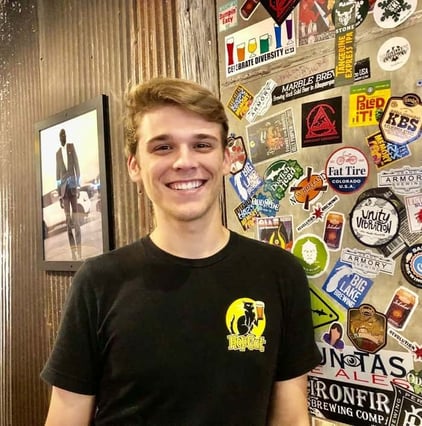
We’re really proud of each location. The managers at the end of the day know they work for HopCat. But there is pride on each person’s face that they work at HopCat East Lansing or Hop Cat Detroit or HopCat Lincoln. The local badge is a good way to showcase that. The Untappd badge you’ve earned, that's yours. You were here, you were a part of this, you stopped and came into our store once or 50 times or for an event, that’s your proof.
GW: Similarly, HopCat has often used sponsored badges to get the word out about special events, collaboration beers, or other things. How have the sponsored badges helped HopCat cultivate its community?
JP: We have always been culturally driven and the sponsored badges have been a great way for us to continue to double down and share about things that are important to us.
[For example,] we came up with a new crowler design to support Pride month or we have done our own little one-off beer events and we do badges for those because ultimately it's about the customer experience.

For folks that want to chase the badge, we are happy to help. As beer and the industry continues to evolve, just bringing in product and putting it on tap is not enough. It's about the experience. Everybody does logoed pint glasses or this or that. You have to continue to look for and find ways to engage with your customers and your fans. The sponsored badges have been a cool way to showcase our art, design, creative minds, and to give back a fun thing [to our customers].
GW: What does the future look like for HopCat?
JP: We’re alive, we're well. The mission continues. Everyday we’re looking for new beer, a new brewery, and somebody to put our support behind.
7 days Free - Untappd For Business
Design your beer and food menus and publish them anywhere! Print, QR code, or digital signage - the possibilities are endless with Untappd for Business!
Schedule a demo or start a free 7 day trial today!
